Neurodiversity: An answer to the accounting talent shortage

How to handle client records requests
Ohio opportunity zones receive a boost and greater flexibility



How to handle client records requests
Ohio opportunity zones receive a boost and greater flexibility

10 Neurodiversity: An answer to the accounting talent shortage
With more professionals leaving the field than entering it, employers are beginning to look elsewhere for qualified candidates—the untapped talent pool of neurodivergent individuals.
2 CEO letter
3 Self-assessment exam Free for members!
4 OSCPA tackles tax conformity, PTE SALT Cap Form and more
The OSCPA advocacy team has been hard at work ensuring our members’ interests are being represented at the Statehouse.
6 How to leverage extroversion or introversion at work
The most productive teams are usually made up of a mix of introverts and extroverts.
8 Acquired diversity: Varied life experiences create a stronger team

Both acquired and inherent diversity must be prioritized to gain maximum benefit from your diversity initiatives.
16 How to handle client records request
There are many considerations in determining what a client record is, who has the rights to it and in what format it needs to be provided.
20 Emotional intelligence: The in-demand skill for great leaders
Emotional intelligence requires feeling, recognizing, and acknowledging emotions in real time and having the skills to not let those emotions get in the way of effective decision making.
26 Ohio opportunity zones receive a boost and great flexibility
The Ohio opportunity zone tax credit has emerged as a powerful tool for investors looking to capitalize on the state’s economic growth.
VOLUME 15 | ISSUE 2
EDITOR
Jessica Salerno-Shumaker –jsalerno@ohiocpa.com
GRAPHIC DESIGN
Kyle Anderson – kanderson@ohiocpa.com
EDITORIAL OFFICES
CPA Voice
4249 Easton Way, Suite 150 Columbus, OH 43219
Tel: 614.764.2727
Email: CPAVoice@ohiocpa.com
Website: www.ohiocpa.com
ADVERTISING
For our display advertising rates or a copy of our media kit, contact us at sales@ohiocpa.com or by call 614.764.2727
ARTICLE SUBMISSIONS
We welcome submissions of analytical articles on issues relevant to Ohio CPAs. Desired length is 800-1200 words. Send an electronic copy with a cover letter to the editor at the email address above. Please note that CPA Voice is not a peer-reviewed journal.
Members of The Ohio Society of CPAs receive CPA Voice as a member benefit. Nonmembers may subscribe for $39.95 annually. To update your mailing address or to subscribe to CPA Voice, contact your Member Service Center at 614.764.2727, option 2.
REPRINTS
To order reprints of CPA Voice articles, or for reprint permission, contact the editor at the address above.
CPA Voice is the official magazine of The Ohio Society of Certified Public Accountants. CPA Voice’s purpose is to serve as the primary news and information vehicle for the nearly 21,000 Ohio CPA members and professional affiliates. Articles are reviewed for technical accuracy. However, the materials and information contained within CPA Voice are offered as information only and not as practice, financial, accounting, legal or other professional advice. While we strive to present accurate and reliable information, The Ohio Society of CPAs makes no warranties regarding the accuracy of the information provided herein. Readers are strongly encouraged to conduct appropriate research to determine the accuracy of the information provided and to consult with an appropriate, competent professional adviser before acting on the information contained in this publication. The statements of fact, thoughts, advice and opinions expressed in CPA Voice are those of the authors alone and do not represent or imply the positions, opinions, nor endorsement of The Ohio Society of CPAs or of its publisher, editors, Board of Directors, or members. It is our policy not to knowingly accept advertising that discriminates on the basis of race, religion, gender, age or origin. The Ohio Society of CPAs reserves the right to reject paid advertising in its sole discretion. We do not necessarily endorse the resources, services or products unrelated to The Ohio Society of CPAs that may appear or be referenced within CPA Voice and make no representation or warranties about those products or services or the accuracy and claims regarding those products and services. Advertisers and their agencies assume liability for all advertisement content and responsibility for all claims resulting from such advertisements made against The Ohio Society of CPAs. The Ohio Society of CPAs does not guarantee delivery dates for CPA Voice and disclaims all warranties, express or implied, and assumes no responsibility whatsoever for damages incurred as a result of delivery delays.
CPA Voice (ISSN 0749-8284) is published six times per year by The Ohio Society of CPAs, 4249 Easton Way, Suite 150, Columbus OH 43219, 614.764.2727. Subscription price for non-members: $39.95.
Copyright © 2023 by The Ohio Society of CPAs; all rights reserved. No part of the contents of CPA Voice may be reproduced by any means or in any form, or incorporated into any information retrieval system without the written consent of CPA Voice Permission requests may be sent to the editor at the address above. While care will be given to all materials submitted for publication, we do not accept responsibility for unsolicited manuscripts, and they will not be returned unless accompanied by a self-addressed postage prepaid envelope. Periodicals postage paid at Columbus, OH and at additional mailing offices. POSTMASTER: Send address changes to: CPA Voice The Ohio Society of CPAs, 4249 Easton Way, Suite 150, Columbus OH 43219.
30 Members in motion
As we say goodbye to colder temperatures and welcome spring blooms, there is an excitement in the air. It’s hard not to feel rejuvenated by warmer weather and longer days of sunshine, and at OSCPA we’re ready to take that feeling into continued advocacy on behalf of our members.
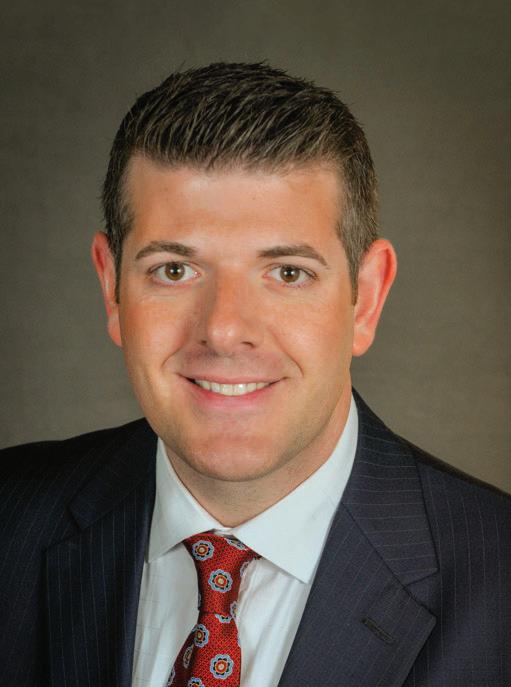
Whether your New Year’s resolution list is stuffed in a drawer somewhere or taped proudly to your desk, there is always opportunity to evolve and grow from what we thought possible. In relationships with colleagues, small everyday tasks and new projects there is room to grow and stretch and even surprise yourself with your capabilities.
But to reimagine and grow requires mindfulness, which can be difficult to adhere to when your to-do list is miles long and your manager is expecting your next assignment in by tomorrow. So start small if you have to, and push yourself outside of your comfort zone in ways that won’t feel overwhelming but do feel new or different to you.
It’s important to remember while trying new things they won’t always go as planned. You might fail or take missteps and have to adjust your thinking or strategy, but this is a critical part of the journey. Don’t let the fear of failure stop your growth.
We’re here to help you reimagine your career possibilities with our extensive learning portfolio this spring. Take advantage of member curriculum with the Advance program, strengthen core competencies in-person at Core Con Conference and invest in strategy at the Strategic Finance and Accounting Virtual Conference. Register for these and more learning at my.ohiocpa.com
As always, we’re honored to partner with you and help advance the profession and the state of business in Ohio. Here’s to reimagining.

Log in to my.ohiocpa.com, look up the exam using the product ID number above and answer the 12 required questions based on content in CPA Voice.
Cost Members Free
Nonmembers $40
Exams remain available online – and may be completed for CPE – through the same month of the following calendar year.
MARCH | APRIL 2023
Product ID: #57566
1. Log in to my.ohiocpa.com
2. Search "CPA Voice" and then find the appropriate exam.
3. If you're a member, click "Enroll." If you're a nonmember, click "Add to cart" and purchase the exam.
4. On the Confirmation Page click “Go to your learning center.”
5. The exam will be available under the "Current" section. Turn off pop-up blockers, then click "Launch."
Respondents taking the exam online receive their results immediately. Respondents who pass with a grade of 70% or better receive one hour of CPE credit in specialized knowledge, as approved by the Accountancy Board of Ohio.

Recently, OSCPA-backed Senate Bill 10, the annual federal/state tax conformity legislation and the accompanying emergency clause, passed both the Ohio Senate on Feb. 8 with a vote of 30-0 and then the Ohio House on March 1 by a vote of 88-7.
Senate Ways & Means Chair Bill Blessing, R-Cincinnati, was the sponsor of S.B. 10, which he said incorporates into Ohio law recent changes to the Internal Revenue Code that took effect after Feb. 17, 2022, when H.B. 51 (134th GA) brought Ohio into conformity with federal law and its applicability to Ohio’s income taxes.

The OSCPA advocacy team has been hard at work ensuring our members’ interests are being represented at the Statehouse.
OSCPA staff report
The two federal acts requiring the update to Ohio’s code are H.R. 5376—the Inflation Reduction Act from August 2022, and H.R. 2617—the Consolidated Appropriations Act from December 2022. The most significant changes affecting Ohio law on S.B. 10 are available online.
Greg Saul, director of tax policy for The Ohio Society of CPAs, testified as a proponent before both the Ohio Senate and House Ways & Means Committees, stating that OSCPA has advocated for tax simplicity for years and unless the Ohio General Assembly and the Governor again amend the Ohio Revised Code, many taxpayers will have to make “add-backs” on their 2022 income tax returns.
Saul said OSCPA also strongly supports the emergency clause given that the normal 90-day effective date for legislation would already occur after the current tax deadline of April 18. The OSCPA has traditionally supported legislation incorporating federal tax law changes into the Ohio Revised Code to bring conformity to most federal and state tax calculations.

S.B. 10 now heads to Governor DeWine and will become law immediately upon his signature.
On March 9, OSCPA held a CPE webinar to cover the new IT 4738 Form with Matt Dodovich, an attorney supervisor in the Tax Appeals Division at the Ohio Department of Taxation, joining Tom Zaino and Steve Hall from Zaino Hall & Farrin.
The webinar followed the Ohio Department of Taxation’s release on Jan. 20 of a third round of guidance for passthrough entities who “elect” to be subject to a new entity-level tax in response to the federal $10,000 SALT deduction cap limit placed on individuals. The ODT created the new Form IT 4738 after the enactment of OSCPA-supported Senate Bill 246, also known as Ohio’s version of the SALT cap deduction parity/workaround.
The advocacy team is also reviewing the Ohio budget bill (House Bill 33) and will have more insight to offer in the coming months as to what this could mean for the business environment.
At some point, you’ve probably been called—maybe even referred to yourself as—an introvert or extrovert. Psychologist Carl Jung coined these terms in the 1920s. The difference between these two personality types essentially comes down to energy. Extroverted people are energized by social interactions, while introverts need time alone to recharge. Chances are, you’re not 100% of either. Most people fall somewhere along the spectrum between extroversion and introversion. However, if you enjoy working in groups, talking through problems you need to solve or find it easy to express your thoughts and feelings, you probably lean toward extroversion. If you prefer listening to people speaking or are more comfortable sharing your ideas in written form than engaging in a debate or discussion, you probably lean toward introversion.
Either way, you have unique strengths that can help you excel at work if you know how to leverage them.
If you’re not sure which side of the spectrum you lean toward, you might be an ambivert—someone whose personality is a balance of introverted and extroverted features. You can take a quiz from TED to discover your type.
Understanding your natural tendencies is powerful because when you live a life that complements your nature:
• You can unleash incredible stores of energy
• You can be a loyal, valued team player
• You can connect with coworkers and clients in a way that fits your style
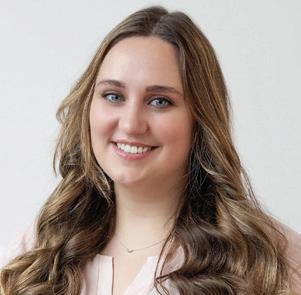
• You can seek out environments that help you come up with creative and innovative ideas
What do Eleanor Roosevelt, Gandhi, Bill Gates, Richard Branson, Barack Obama and Michael Jordan have in common? They all identify as introverts.
Strengths of an introvert include:
• Excelling at critical thinking and thinking carefully before acting
• Being less emotional in stressful and challenging situations
• Exploring problems from multiple angles and getting to the bottom of an issue
• Being conscientious about their work and taking time to ask the right questions
• Emphasizing quality and accuracy in their work
• Setting high standards for themselves
• Complying with rules and procedures
• Exhibiting superior written communication skills
• Paying attention to detail
• Being a good listener to employees, clients and customers
Introverts tend to do best when leading collaborative teams. Their listening skills allow them to hear ideas from other people and make their colleagues feel valued.
Famous extroverts include Bill Clinton, Steve Jobs, Winston Churchill, Oprah Winfrey and Martin Luther King, Jr.
Strengths of an extrovert include:
• Being able to connect with others quickly
• Remembering names and faces
• Willing to assist others
• Having their comments and ideas well received in meetings
• Being straightforward, candid and charismatic
• Exuding confidence in social settings
• Communicating easily with a variety of people
• Working well in group settings
• Having confidence and likely to take charge.
Extroverts do best when leading teams that want direction from above because they’re comfortable engaging with various people and can motivate others.
There’s no right or wrong way to be in the workplace, and the most productive teams are usually made up of a mix of introverts and extroverts. Each person has strengths and weaknesses, so identify yours and look for ways to leverage them at work. Learn about the other people on your team so you can help them leverage their strengths and mitigate weaknesses. When we can all feel comfortable bringing our true selves to work and know our contributions are valued, we can better serve ourselves, our teams and our clients.
Whether you’re still basking in the glow of passing your CPA exam, a mid-level manager who needs a change, or a seasoned CFO who wants top talent, the OSCPA Career Center is your one-stop-shop to uncover rewarding careers and discover untapped talent.
Employers:
• Post jobs
• Review resumes
• Screen candidates
• Expand your reach with enhanced posting options
• Explore our recruitment and retention resources


Job Seekers:
• Search for jobs
• Customize your job alerts
• Post resumes anonymously
• Save resumes and cover letters on your dashboard
• Access videos and articles on interviewing, resume writing and more
• Get free interview coaching via email or more personalized coaching for a fee
For more info, visit ohiocpa.com/career-center
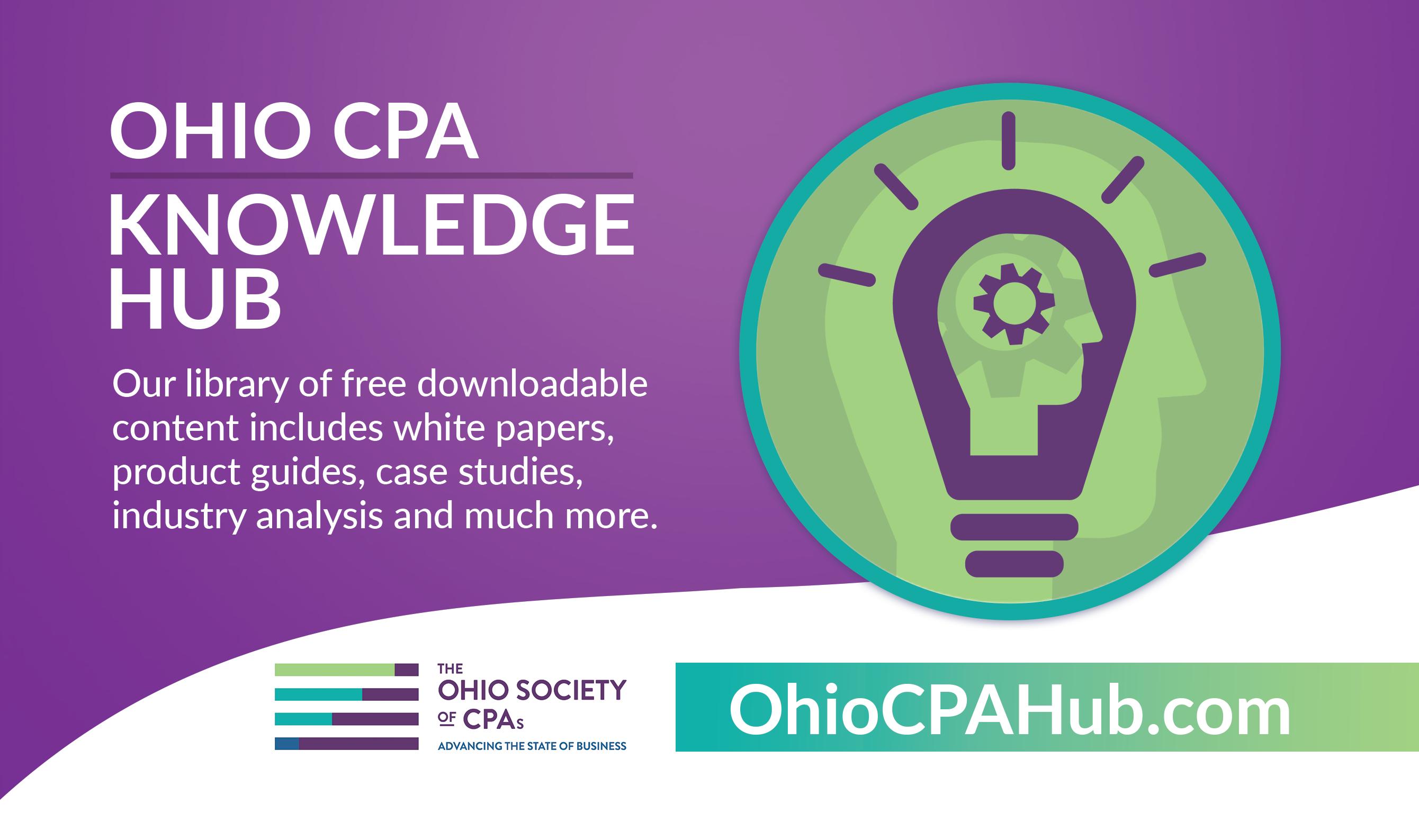

They think diversity only includes inherent traits such as race, gender identity, or sexual orientation. However, acquired traits like education, veteran status, socioeconomic class, places lived, and age are also dimensions of diversity. And eventually, all of us will assume one or more of these identities. Diversity really does include everyone.
Both inherent and acquired diversity drive processes critical to business success. You’ve likely heard the statistics about inherent diversity: companies in the top quartile for gender diversity on executive teams were 25% more likely to have above-average profitability than companies in the fourth quartile and top-quartile companies in ethnic and cultural diversity outperformed those in the fourth by 36% in profitability. But have you considered the benefits of acquired diversity?
There’s limited research tying acquired diversity directly to quantitative outcomes, as acquired diversity is difficult to measure due to its malleable nature. However, we can logically deduce several benefits.
Let’s take places lived as an example. Imagine you are a global company headquartered in the United States with clients throughout Europe and Asia. Folks who have lived in these places and are multilingual would be a huge asset to your company. Such employees can be a critical link between U.S.-based executives and foreign-based clients.
Veteran status is another strong example. Veterans gain several desired skills through their service, including leadership capabilities, problem-solving, loyalty, discipline, and quick decision-making. Veterans who have been deployed overseas also gain cultural competence and are likely to be multilingual — both highly desired traits in today’s global business world.
Groups with varied educational backgrounds drive innovation and problem-solving. Diversity of thought is the core of what makes diverse teams successful. Different perspectives and views of a problem enable teams to consider several vantage points before coming to a decision. They also lead to rich brainstorming sessions that drive creativity. For example, when solving critical business problems, you may want to speak with team members who are analytical, customer-oriented, and solution-driven. Having these three perspectives allows you to assess the root of the problem, keep your clients top-of-mind, and prioritize moving forward.
Both acquired and inherent diversity must be prioritized to gain maximum benefit from your diversity initiatives.
But how do organizations intentionally form teams with acquired diversity?
Expand awareness. The first step in driving acquired diversity is ensuring company-wide understanding of what it is and recognition of its benefits.
Recruit culture “adds,” not culture “fits.” Many companies prioritize recruiting new hires that fit into their existing culture. However, they should instead prioritize recruiting new hires that bring new perspectives and ways of thinking. Hiring for acquired diversity goes hand in hand with hiring culture adds.
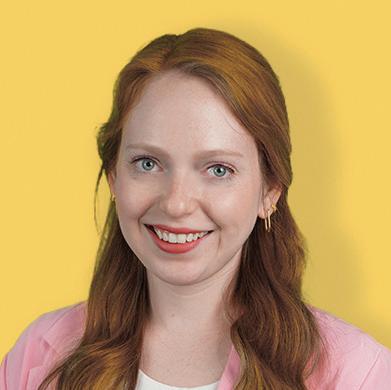
Broaden your network. Look past your typical recruiting platforms and consider where you might post instead to obtain acquired diversity. Consider partnering with your local veteran’s association, community colleges, or cultural centers.
Reevaluate your hiring requirements. Have you always required a college degree? Proficiency in English?
Traditional career trajectories? If so, consider if these are truly requirements for your job openings or if they are simply traditions or preferences. These “requirements” may alienate otherwise highly qualified candidates who can bring new perspectives to your organization.
Use inclusive language. Recruiting diverse talent is one thing; retaining diverse talent is another. Make sure that you are using inclusive language for all dimensions of acquired diversity. For instance, be mindful of using metaphorical words and phrases such as “go to war,” “PTSD,” or “drop a bomb on” as they make light of the real, lived experiences of your veteran employees. To learn more about inclusive language for acquired diversity, purchase our book, The Inclusive Language Handbook
Kaela Sosa is co-founder and Manager, Curriculum and Programming at The Diversity Movement. Her expertise includes psychology, gender identity and sexual orientation, and racial identities. Kaela has written and spoken about a range of topics: active allyship, the inclusive talent lifecycle, disability etiquette, LGBTQ+ inclusion, and inclusive language. At The Diversity Movement, she leads the development and execution of learning programs, including digital learning, online courses, certificate programs, and certification opportunities. Connect with or follow Kaela on LinkedIn to learn more.
Some folks believe that diversity initiatives aren’t for them.
 By Anthony Pacilio, Vice President of Neurodiverse Solutions at CAI
By Anthony Pacilio, Vice President of Neurodiverse Solutions at CAI
According to Bloomberg Tax & Accounting, employment for accountants and auditors dropped by 17% from 2019 to 2021. With more professionals leaving the field than entering it, employers are beginning to look elsewhere for qualified candidates—the untapped talent pool of neurodivergent individuals.
Neurodiversity is the range of differences in individual brain function. People who are neurodivergent could be diagnosed with autism, dyslexia, dyspraxia, or ADHD to name a few. Unfortunately, this population has been widely overlooked for employment opportunities and remains one of the largest unemployed and underemployed groups of people by as much as 30 to 40% according to the University of Connecticut.
Partnerships such as the one with The Ohio Society of CPAs and CAI are changing that narrative by enabling the accounting and financial industries to tap into this talent pool.
CAI Neurodiverse Solutions, CAI’s end-to-end neurodiversity employment program, is helping OSCPA regenerate their
candidate pipeline with qualified neurodivergent individuals and educate members about the program’s benefits to introduce the solution to other firms and organizations.

Being neurodivergent myself, my passion lies in helping other neurodivergent individuals find rewarding careers, while educating employers on the advantages of neurodiversity in the workplace. Over the course of my career, I have been fortunate to watch more neurodivergent individuals take a seat at the table and have their voices heard. But the positive impact of a worthwhile job transcends the employee and employer.
A former neurodivergent colleague of mine wanted to get her driver’s license and asked for my help. This was a massive opportunity because, along with the skills she gained in her career, she developed newfound confidence in herself. Leading up to the license exam, she and I would discuss traffic laws and different scenarios she might encounter when driving. She was so prepared that when it came time for the test, she passed with flying colors. A few months later, her mother called me crying. She was so relieved that her daughter was now driving and even moving into her own apartment. No longer did she have to worry about how her daughter would navigate the world. She wasn’t just living but thriving on her own. It’s stories like this that give me purpose.
The bottom line is that everyone deserves a life filled with meaningful work that makes a difference. Beyond the obvious positive effects, organizations with neurotypical and neurodivergent employees see innovation and productivity spike because of the new ideas and processes that come from these blended teams. Accounting can benefit from skills, including data analysis, pattern recognition, and attention to detail that are just as crucial to the field as those who are mathematicians. After all, different roles require different skills, and that’s where neurodiversity comes into play.
Through data analysis, neurodivergent individuals are keen at identifying and forecasting trends, which help clients know about potential profit gains and losses faster. And with a laser focus on detail, small data errors are noticed and corrected sooner to avoid bigger problems down the road. This is only scratching the surface, though, as to what will come from employing neurodiverse talent.
Increasing neurodiversity in the workplace is a mindset shift within the organization. A viable firm that will benefit from neurodivergent employees is one that already knows the strengths that come from a diverse culture and accessible working environment. OSCPA embraces diversity and inclusivity and demonstrates that through our partnership.

But if you are just embarking on this journey, where do you start? At the beginning. Specifically, during the interviewing and hiring processes. In lieu of the traditional interview, a hands-on evaluation led by neurodiversitycertified professionals can showcase a candidate’s skills in a supportive environment. It removes the barriers of a typical interview so that hard and soft skills can shine. This method also offers both the prospective employee and employer the opportunity to align talent with the position’s needs.
After the offer has been accepted, a neurodiverse-friendly work atmosphere is key.
Support the future of the accounting profession. Learn more about our programs at www.ohiocpafoundation.org . Make a gift of any amount online at www.ohiocpa.com/donate .

• Welcomes the next generation to our profession
• Introduces students to the benefi ts and values of becoming a CPA

• Contributes to leadership development programs that enable students to enter the workforce prepared for success


1. Organizations with neurotypical and neurodivergent employees see innovation and productivity spike because of the new ideas and processes that come from these blended teams.
Integration and ongoing support are critical steps in the process. Onboarding neurodivergent employees and helping with career mobility is best done with a neurodiversitycertified team lead. This leader manages work and maintains accountability while also developing skills so that careers do not plateau or stagnate, but rather grow. When a team lead coaches self-advocacy, neurodivergent employees can best present their value to managers when it comes time to discuss upward growth.
Leaders can also identify and implement workplace accommodations that will make it easier for neurodivergent employees to integrate into the team. Noise-canceling headphones, desk placements, and softer lighting are simple and affordable in-office accommodations that can make a difference in productivity and engagement levels. Closed captioning, recording meetings, and using meeting agendas are great for remote or hybrid roles that can keep employees informed and reduce anxiety.
CAI Neurodiverse Solutions has been in practice for over a decade. Through our experience, we’ve been able to achieve a 94% retention rate within the first 12 months of employment across all industries. And we are thrilled to work with OSCPA to bring more awareness and neurodiversehiring practices to the field.
With more neurodiversity employment and collaborative partnerships like OSCPA and CAI, we will realize our vision of having more neurodivergent individuals in the C-suite.

2. Accounting can benefit from skills, including data analysis, pattern recognition, and attention to detail that are just as crucial to the field as those who are mathematicians.
3. Leaders can also identify and implement workplace accommodations that will make it easier for neurodivergent employees to integrate into the team.

Hear from the DOL and peer review experts on the latest updates and top audit issues through interactive learning focused on the EBP sector and enhancing audit quality. And, if you’re new to EBP audits, we have a boot camp for beginners.
• A U.S. Department of Labor update
• Accounting and auditing update
• Retirement legislation update
• Fiduciary responsibilities, ERISA compliance and best practices
• Initial plan audit overview
• Peer review update
• Form 5500
• Audit technology
• Risk management best practices
• EBP audit beginner boot camp
This is your opportunity to interact and collaborate with CFOs, Controllers and VPs who are priortizing their organizations’ future. Don’t miss out on a learning opportunity built exclusively for corporate CPAs.
• Develop talent
• Build your strategy
• Position your team for the future of fi nance and accounting
• Enhance competence
• Gain confi dence in strategic thinking
• Infl uence the future of your organization Learn
call 614.764.2727 (option 2 for Member Services)
• Identify key traits, skills and mindsets needed for fi nance and accounting leaders
April 20, 2023
a.m. – 4:30 p.m.
credits
by 3/23 to save $50
 By Laura Hay, CPA, CAE
By Laura Hay, CPA, CAE
CPAs are the source of critical client business information, and situations often arise that require CPAs to determine others’ accessibility to that information within the profession’s rules.
The departure of an employee, a client separation, or a business restructuring are frequent examples that result in client records requests, and there are many considerations in determining what a client record is, who has the rights to it and in what format it needs to be provided.
Rules have evolved in response to increased automation, new forms of business, cloud services and other environmental factors in business. While your professional liability insurance carrier and legal counsel will be the ultimate resource for navigating the rules and regulations in this area, this article provides some of the core rules of the profession that apply to client records requests. It is not intended to be a substitute for legal advice.
The AICPA revised its “Records Requests” Interpretation (ET sec. 1.400.200) under the “Acts Discreditable” Rule (ET sec. 1.400.001) effective July 31, 2021. Records defined under this rule include:
Client-provided records include accounting or other records, whether electronic or hard copy, that were provided by the client to the CPA.
These records should be made available to the person or entity that provided the records, or to the individual designated or held out as the individual’s or entity’s representative, as soon as practicable, but absent extenuating circumstances, no later than 45 days after the request is made.
Member-prepared records include accounting or other records that the CPA was not specifically engaged to prepare and that are not in the client’s books and records, which would result in the client’s financial information being incomplete. Examples include books of original entry prepared by the CPA; adjusting, closing, combining or consolidating journal entries (including computations supporting such entries); and subsidiary ledgers or schedules, including depreciation schedules.
Member’s work product includes items the CPA was specifically engaged to perform, such as tax returns or financial reports.
Member-prepared records and member’s work product should be made available to the person or entity for which the engaging entity has engaged the CPA to provide professional services, or to that individual or entity’s designated representative, within 45 days of a request. These records may be withheld if fees are due to the CPA for the specific work product. See the Ohio Accountancy Board rule reference in the following section for additional requirements for withholding member-prepared records or work product in Ohio.
The CPA may charge a reasonable fee to retrieve, copy and ship such records. Work products may be withheld if they are incomplete, if necessary to comply with professional standards (for example, when there is an audit issue), or if threat of or outstanding litigation exists concerning the engagement or the CPA’s work.
The CPA’s working papers are items prepared solely for purposes of the engagement, and include audit programs, analytical review schedules, statistical sampling results and analyses, testing or research conducted by the CPA. The CPA is under no obligation to make such information available to the client. Once a CPA has complied with the above requirements, they are under no obligation to make additional copies of client records available in response to a request, unless the client’s records are lost in a natural disaster or an act of war. The CPA is under no obligation to make records available for periods exceeding applicable laws, professional standards, or contractual requirements for client record retention.
“Make available” means to provide the records in any format that is usable and accessible, whether electronic or otherwise, regardless of the format in which they were received.
Ohio Administrative Rule 4701-11-06, “Retention of Client Records,” adopted by the Accountancy Board of Ohio, establishes additional requirements for withholding CPA-prepared client records or work product for fees owed. Section (H) of the Rule provides that there must be a documented understanding prepared prior to the engagement and communicated to the client stating the fee arrangement specific to the service(s) being provided. Absent such a documented understanding, the CPA may not withhold CPA-prepared client records for fees owed.
If client records exist in electronic format, must the CPA provide electronic copies in response to a client request?
Section (F) of the ABO Rule provides that:
“If the public accounting firm or Ohio permit holder has converted client information onto computer files for use with the firm's or permit holder's software and the firm or permit holder has not been paid for professional services rendered, then the firm or permit holder is under no obligation to provide the client with electronic files or a copy of any software. If the client has paid the firm or permit holder for professional services rendered, then the firm or permit holder must provide a copy of all relevant electronic data files to the client.”
What is a “relevant electronic data file?” The ABO is currently interpreting this section of the Rule consistent with AICPA nonauthoritative guidance included in their “Frequently
Asked Questions: General Ethics” as of March 18, 2022. Questions 1, 4 and 5 under “Electronic records” in the FAQs discuss when an electronic data file is considered the CPA’s working papers, a member-prepared record, or a member work product.
If the electronic data was entered from redundant information retained by the client, it is part of the CPA’s working papers. For example, if the CPA enters information from the client’s trial balance into software to compile the financial statements or tax return, they are not required to provide a copy of the data file unless they were engaged to do so. The work product is a financial statement or tax return.
If the CPA maintains the only electronic copy of information the client needs to have complete financial records (for example, the CPA prepares the client’s general ledger), it is a member-prepared record. If the CPA has been engaged to provide the electronic files (the CPA agreed to do so in the engagement letter), it would be a member work product. These data files should be made available if the client has paid the CPA for services rendered.
Effective June 30, 2017, the AICPA Interpretation ET sec.
1.400.205, “Transfer of Files and Return of Client Records in Sale, Transfer, Discontinuance or Acquisition of a Practice,” addresses the CPA’s professional responsibilities for client records when the CPA firm transitions ownership.
A CPA selling or transferring their practice is required to notify each client subject to the sale or transfer requesting the client’s consent to transfer its files to the successor firm. The CPA may notify the client that its consent may be
presumed if it does not respond to the CPA’s request within a period of not less than 90 days. The files should not be transferred until either the client’s consent is obtained, or the number of days has lapsed, whichever is shorter.
Arrangements for files not subject to the sale or transfer should be made in accordance with the Records Request Interpretation (ET sec. 1.400.200).
A CPA discontinuing a practice should notify all current clients in writing and return records in accordance with the Records Request Interpretation (ET sec. 1.400.200).
In either case, if the CPA is unable to contact the client, files not transferred should be retained in a confidential manner consistent with the firm’s record retention policy or as required by applicable legal or regulatory requirements, whichever is longer.
A CPA acquiring all or part of a practice should be satisfied that the requirements for 1.400.205 have been met.
Treasury Circular 230 provides additional guidance for the return of any client records necessary for the client to comply with its federal tax obligations, even if there is a dispute over fees.
If a CPA receives a subpoena for client records, contact legal counsel and the professional liability insurance carrier.
Laura Hay, CPA, CAE, is the executive vice president of The Ohio Society of CPAs and the staff liaison to the Accounting, Auditing, Professional Ethics Committee and Peer Review Committee. She can be reached at Lhay@ohiocpa.com or 614.321.2231
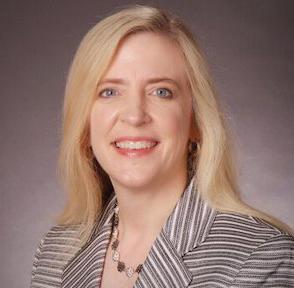
1.
2.
3. A CPA discontinuing a practice should notify all current clients in writing and return records in accordance with the Records Request Interpretation.



 By Elizabeth A. Wilson, CPA
By Elizabeth A. Wilson, CPA
It is not difficult to state in a few words the traits admirable leaders have that are noticeable; it is much harder to identify the below-the-surface components of their leadership style that contribute to their success.
Focus, or directing attention, is a key component to ensuring success. Leaders do not have the luxury of getting things done without distraction, therefore focus is less about task completion and more about allocating attention. As a leader, one must strive to balance the call for attention in two areas –from oneself and from others – in the daily need to address challenging or triggering situations. Proper handling of these situations requires acknowledging and handling one’s own emotions as well as helping others handle theirs.
In managing oneself there are two key components: self-awareness and self-control. Self-awareness is a skill that allows one to tune into one’s own feelings, thoughts, and needs. What is useful here is “open awareness,” which means approaching situations with fresh eyes and letting go of your habitual reactions and expectations. Self-control, or more specifically “cognitive control,” is commonly referred to as willpower. This ability keeps one on track with goals despite emotional distractions.
Empathy and the ability to build social relationships are two important skills for focusing on others. Leaders who do both well bring out the best in their teams and inspire people to come together for a common cause. Empathy is expressed in three different ways:
• Cognitive empathy is the ability to perceive and understand the emotions of another.
• Emotional empathy enables one to share the feelings of another person.
• Empathic concern moves one to action by sensing what another person needs.
A leader who is good at picking up on social context is usually more effective at building solid relationships.
Emotional intelligence became a popular term in the early 1990s, but the buzz over the concept has only continued to grow over the past 30 years. Much evidence has been collected that supports a direct correlation between emotional intelligence and career satisfaction, job performance, relationship success, and mental health. Leaders who possess high levels of emotional intelligence are likely to be more effective communicators and problem solvers because they have a deeper understanding of themselves, their team, and how words and actions impact success.
Emotional intelligence is defined as the capacity to be aware of, control, and express one’s emotions, and to handle interpersonal relationships judiciously and empathetically. Components include being aware of one’s own emotions, effectively managing one’s own emotions, recognizing and identifying others’ emotions, and building meaningful relationships with others. Those with high levels of emotional intelligence effectively tap emotions; this isn’t about suppressing one’s own or others’ emotions. It requires feeling, recognizing, and acknowledging emotions in real time and having the skills to not let those emotions dominate and get in the way of effective decision making.
As the COVID-19 pandemic taught us all, crisis can strike without warning and formulated contingency plans do not always apply. When the best laid plans don’t pan out, intelligently handling the emotions associated with crisis is paramount to survival. Emotionally intelligent leaders typically handle any size crisis better than their less-skilled counterparts by using self-awareness, self-management, social awareness, and relationship management.
Calling upon the qualities that contribute to each specific component, leaders can control emotional reactions across the board and make decisions with fewer unintended consequences.
These are a few traits that many would use to describe the leaders they admire and try to emulate.
Self-awareness – This is the ability to understand one’s own emotions and act with authenticity and conviction. Honesty is vital to truly knowing who you are and what you believe in. Being aware of one's own feelings--not emotions--puts you in charge and allows for objective reflection. Beyond just recognizing your emotions, self-awareness includes understanding the effect your actions, moods, and emotions have on other people. An important aspect of self-awareness is assessing and understanding your limitations. Ask yourself who you are currently and who you want to be. Effective, resonant leaders have clear insight into what they are good at, what is difficult for them, and what they need to learn and do in life to be at their best. To lead authentically, be honest with yourself and use shortcomings as learning opportunities. Effective leaders solicit feedback for the benefit of the team and their own development. Be prepared to not always like what you hear but be willing to learn from it.
Self-management – Awareness of one’s own emotions is the starting point, but managing those emotions and the reactions they evoke is equally important. Self-management, or the ability to manage positive and negative emotions and act with mental clarity and concentrated energy, allows leaders to hold emotions in check and channel focus into creating positive outcomes and effective solutions. Self-management contributes to the development of mindfulness and vice versa. As one grows in mindfulness,
it becomes easier to manage oneself and one’s responses to pressure, stress, and negativity. Mindfulness doesn’t eliminate or reduce emotional experience, rather it creates a present-moment awareness and an acceptance of the emotion, which allows for detection and intervention before emotions spiral out of control. The benefits of mindfulness in the workplace include stronger work relationships, increased productivity, higher levels of team trust, and positive performance feedback.
Social awareness – The ability to understand people, groups, and organizational cultures and to act on one’s understanding of others’ needs and desires is social awareness. With social awareness, a leader can accurately pick up on the emotions of others, understand what is really going on with them, and communicate with them in a way that is intended to meet their needs. Social awareness is all about looking outward to learn about and appreciate others to recognize and understand others’ feelings. By living in the moment, practicing active listening, and keeping eyes, ears, and mind open for observation, an emotionally intelligent leader can understand a situation from another person’s perspective and practice empathy. Leaders who can empathize are often known for their people skills, have profound influence, are good communicators, and have a high capacity for handling difficult people and tense situations with tact and diplomacy.


Relationship management – Relationships are at the foundation of leadership. The ability to guide the emotional tone of a group, build common bonds, mentor and develop others, and manage conflict are all part of building sustainable, successful relationships. Relationship building is most effective if a leader has interest in individual and team development, shows confidence in others’ abilities, and provides the team with the tools needed to overcome obstacles. An important component of being an effective leader is to build a support team. Leaders cannot succeed on their own; even the most outwardly confident executives need support and advice. An emotionally intelligent leader invests time in building relationships and making connections, shares information and power, and recognizes the importance of teamwork in success. By linking people, ideas, and resources, connections are forged and value is created.
Leading others is a privilege, not a right or a guarantee. Likewise, following is a choice that is not handed out freely and without merit. Leading others effectively boils down to creating meaningful relationships, which takes time, effort, and focus. A good relationship is built upon trust, respect, self-awareness, and open communication. Trust allows team members and leadership to be open and honest in thoughts and deeds. Respect means valuing others’ input. Self-awareness (focusing inward) and taking responsibility for your words and actions means others are more likely to be supportive. Without open, honest, and effective communication, relationships will fail. Leaders who actively exercise their emotional intelligence skills can recognize the needs and emotions of others and build positive relationships by meeting those needs.
Effective leadership evolves over time through insight and experience, and one’s leadership journey should be viewed as a work in progress that is likely to go through many iterations. Successful leaders need to continually upgrade their skills to effectively collaborate and meet the needs of an ever-evolving workforce. Emotional intelligence is at the forefront of in-demand skills for effective leaders. If you are looking to achieve this level and succeed should take the time to work on self-awareness, self-management, social awareness, and relationship building to increase your emotional quotient. It is a currency you can’t afford to be without.
Reprinted with permission from the Pennsylvania CPA Journal, a publication of the Pennsylvania Institute of Certified Public Accountants.
Elizabeth A. Wilson, CPA, is chief financial officer of Valley National Financial Advisors in Bethlehem and is a member of the Pennsylvania CPA Journal Editorial Board. She can be reached at esvizz13@gmail.com

1.
2. Emotionally intelligent leaders typically handle any size crisis better than their less-skilled counterparts by using selfawareness, self-management, social awareness, and relationship management.
3. Successful leaders need to continually upgrade their skills to effectively collaborate and meet the needs of an ever-evolving workforce.





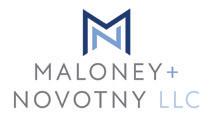

 By Jeremy J. Schirra, Esq., CPA
By Jeremy J. Schirra, Esq., CPA
With 320 designated opportunity zones (OZs) throughout Ohio,¹ the Ohio OZ Credit offers significant tax benefits for those who invest in low-income communities (and adjacent communities) to drive economic development in these areas. Investors facilitate their investment in several ways, including:
(1) investing in OZ-situated real estate development projects organized by professional real estate development firms,
(2) developing their own real estate project in an OZ, or
(3) investing in a professionally managed qualified opportunity zone fund.²
The Ohio OZ Credit is an accretive tool that works in tandem with the federal OZ program as a credit against Ohio personal income taxes. While not required, the Ohio OZ Credit and federal OZ incentive are nearly always paired. For example, an Ohio OZ investor who does not have gains with which to qualify under the federal OZ program can still qualify to receive the Ohio OZ Credit.
There have been key legislative changes made to the credit in 2022, and it’s valuable to understand opportunity zones since they are a prerequisite to obtaining the Ohio OZ Credit.
The Tax Cuts and Jobs Act of 2017 (TCJA) marked the conception of the OZ program. Following the TCJA’s passage, OZs were designated, and the program provided several options to incentivize investment in those designated areas. Incentives and tax advantages under the federal OZ program include:
• Deferral of otherwise taxable gains invested through Dec. 31, 2026; and
• Permanent exclusion of post-acquisition gains for qualifying investments held for 10 years (e.g., if an initial investment of $100,000 is later sold for $1,000,000 after a 10-year holding period, the capital gains on such investment would not be taxed).³
In general, the federal OZ program requires that an investor invest an eligible gain into a qualified opportunity fund (QOF) within a 180-day period of realizing such gain.4 A qualified opportunity fund (QOF) is an entity structured as a partnership or corporation for tax purposes that intends to meet
(and meets) the requisite ownership threshold of “qualified opportunity zone property” within the required time, among other technical requirements. 5 In practice, an overwhelming majority of experienced OZ investors utilize a so-called two-tier structure where the QOF makes an investment into a qualified opportunity zone business (QOZB). This investment into a QOZB in exchange for equity constitutes the purchase of qualified opportunity zone property. The use of a QOZB implicates other technical structural, operational and asset-based requirements. While this two-tier structure sounds more complex, practitioners view this structure as the more flexible structure from a compliance perspective in most circumstances.
The Ohio Opportunity Zones Tax Credit Program (the Ohio Program) provides qualifying applicants a tax credit against Ohio income taxes for 10% of a qualifying investment into an Ohio QOF. This credit is immediately available to the qualifying investor upon award and thus can significantly improve an investor’s after-tax return on investment. There are several requirements to qualify for the Ohio OZ Credit, including:
• The applicant’s investment must be invested in an Ohio qualified opportunity fund (Ohio Fund) (i.e., a QOF that holds one hundred percent of its invested assets in Ohio-situated qualified opportunity zone property); and
• The Ohio Fund must deploy the applicant’s original investment into Ohio qualified opportunity zone property, which can consist of interests in an Ohio QOZB.6
The Ohio legislature modified and enhanced the Ohio Program by the passage of Ohio Substitute Senate Bill 225 (S.B. 225) in June 2022, which law became effective in September 2022. This past January, the Ohio Department of Development (Development) received its first round of applications under its revised Ohio Program.
Key Ohio Opportunity Zone Changes made by S.B. 225:
• Increased availability. S.B. 225 increased the biennium cap on program tax credit awards from $50 million to $75 million for the 2022-23 biennium (July 1, 2021 through June 30, 2023). Thereafter, there will be a $50 million cap
(Ohio OZ Credit) has emerged as a powerful tool for investors looking to capitalize on the state’s economic growth.
for the 2024 fiscal year and a $25 million cap for each fiscal year thereafter.7
• Increased eligibility. The original Ohio OZ Credit law required that to be an eligible applicant, the applicant had to be an Ohio personal income taxpayer. Under S.B. 225, non-taxpayers can be eligible applicants. 8

• Increased transferability. Awardees of Ohio OZ Credit certificates can transfer, in whole or in part, the amount of Ohio OZ Credits awarded to any number of transferees by providing written notice to the Ohio Tax Commissioner.9 Those transferees can similarly transfer their rights to Ohio OZ Credits, in whole or in part, to others.10 Under the original Ohio OZ Credit law, the entire certificate was to be transferred. This enhanced transferability should result in
more efficient and expedient use of the Ohio OZ Credits awarded and should minimize the amount of credits carried forward.
• More frequent application windows. Under Ohio’s revised program, instead of a single month-long annual window each January with respect to prior calendar year investments, there are now two application windows. The first window runs from Jan. 10 through Feb. 1. The second window runs from July 10 through August 1.11 Each new application window looks back to qualifying Ohio OZ investments in the immediately preceding investment period. The investment periods are now: (A) January 1 through June 30, and (B) July 1 through December 31.
• QOF managers should be especially wary of the implications of making debt-financed distributions to their investors, especially in the case of distributions made within two years from the time when the QOF raised capital.12 The OZ regulations modify the general disguised sale rules and may cause an OZ investor’s original contribution that was a qualifying investment to retroactively be treated as not being made in exchange for a qualifying investment and trigger disguised sale treatment.
• Many would-be OZ investors mistakenly believe that the law provides for a 180-day investment period measured only from the date that the underlying gain or gains were realized. While this is generally the case, there may be different 180-day periods available, especially in the event of gains realized by a partnership.13 For example, if a partnership using a calendar year as its tax year realized gains in May 2022, the individual partners may be able to use a 180-day period beginning on Dec. 31, 2022.
• The Department grants Ohio OZ Credits in each application window on a first come, first served basis. Thus, it is advisable for qualifying investors to submit an application upon the opening of the application window.
This article represents a summary only. It does not include all of the provisions of the applicable statutes, rules, regulations and guidance, and ignores various fact-specific technicalities and requirements. It is intended for discussion purposes only and not intended to provide tax advice. Please consult with your real estate tax counsel and certified public accountants with opportunity zone expertise prior to making any opportunity zone investment.
1 Ohio Department of Development, Ohio Opportunity Zones Tax Credit Program, https://development.ohio.gov/business/state-incentives/ ohio-opportunity-zones (last visited Jan. 29, 2023).
2 Note that any investor utilizing an organized qualified opportunity fund should ensure that only investments in Ohio qualified opportunity zone property would be made if the investor desires to be eligible for Ohio OZ Credits. Further, it should be noted that both the Ohio and federal opportunity zone programs incentivize not only real estate development projects, but also investments into operating businesses.
3 I.R.C. §1400Z-2(c). Note that there were opportunities to obtain a 10 or 15 percent step up in basis on the investor’s original investment but those provisions have expired for new opportunity zone investments.
4 See I.R.C. §1400Z-2(a)(1)(A).
5 See, e.g., Internal Revenue Code §1400Z-2(d)(1) and the underlying Treasury Regulations.
6 In the application process to obtain the Ohio OZ Credit, Development requires documentation enabling it to trace the investment to ensure the Ohio Fund in fact received funds and that funds were in fact deployed by the Ohio Fund into a qualifying investment.
7 Ohio Rev. Code §122.84(C)(2).
8 See, e.g., Ohio Rev. Code §§122.84(A)(4) & (B).
9 Ohio Rev. Code §122.84(E)
10 See id.
11 Ohio Rev. Code §122.84(B).
12 See Treas. Reg. §1.1400Z2(a)-1(c)(6)(iii)(A)(2).
13 See Treas. Reg. §1.1400Z2(a)-1(c)(8)(iii)(A) & (B).
Jeremy J. Schirra is a member of Dickinson Wright PLLC, a full-service national law firm with 19 offices throughout the United States and Canada, and is an attorney and CPA in Ohio. Mr. Schirra’s legal practice focuses on real estate development, joint ventures, capital raises, taxation and finance, with an emphasis on complex real estate transactions involving tax and economic development incentives.

1. The Ohio OZ Credit offers significant tax benefits for those who invest in low-income communities (and adjacent communities) to drive economic development in these areas.
2. The Ohio Opportunity Zones Tax Credit Program provides qualifying applicants a tax credit against Ohio income taxes for 10% of a qualifying investment into an Ohio QOF.
3. The Ohio legislature modified and enhanced the Ohio Program by the passage of Ohio Substitute Senate Bill 225 (S.B. 225) in June 2022, which law became effective in September 2022.
Schroedel, Scullin & Bestic, CPAs has made the following promotions:
• Nico P. Sabors to supervisor
• Nicholas A. Dastoli and Emilee R. Smrek to senior team accountant
Alan Baker at Blue & Co., LLC has been named the firm’s director of accounting and auditing and the Chair of the Audit, Accounting and Quality Control Committee effective Jan. 1, 2023.

Jacob Finley, CPA , has been promoted to manager at Brixey & Meyer.


Julie Koschik, CPA , was recently promoted to director of business services at Dyke Yaxley LLC.
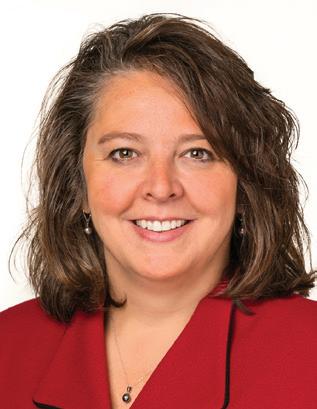
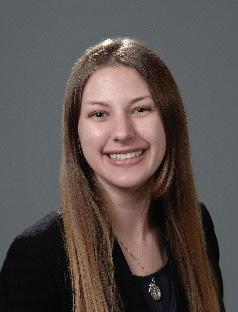
Ryan Kramer has been promoted to Director of HW Healthcare Advisors department at HW&Co.
p13 ZFH
p19 Duffy+Duffy Cost Segregation Services
p23 CPACharge LLC
p30 Accounting Biz Brokers, LLC

Douglas Steiger and Robert Simeral have been promoted to senior accountants at Brixey & Meyer.
Kaiser Consulting has recently been named a Best Place to Work in Central Ohio for the seventh time overall and the fifth year in a row.
Brixey & Meyer has made the following promotions:
• Scott Kenney, CPA , to partner
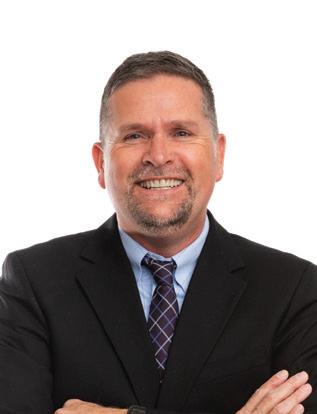
• Victoria Koeper, CPA , and Garrett Hudson, CPA , to manager
• Lillian Morgan, PHR, to HR specialist
• Jillian Proud to senior manager
Selling or Buying a Firm in 2023? Selling an accounting firm is complex. We can make it simple!
Accounting Biz Brokers, LLC has been selling accounting firms and tax practices for over 18 years! Let’s face it, you know how to run your business, but it takes a very different skill set to sell a business successfully. Our team of Certified Business Intermediaries is committed to providing personalized business brokerage services to our clients and customers. Selling professional practices like yours is all we do. Through the use of targeted marketing strategies, we have developed a large database of active buyers ready to purchase.
Call or email us today to receive a FREE Market Analysis of your firm or to start the confidential sales process. We’re ready to help you achieve a successful sale!
Kathy Brents, CPA, CBI Office 866.260.2793; Cell 501.514.4928
Kathy@AccountingBizBrokers.com
www.AccountingBizBrokers.com
Our efforts together to engage CPAs, those on the path to CPA, and related professionals, is absolutely essential to protecting and growing this profession!
Have 100% of your Ohio-licensed CPAs as members, have 15+ total members (including your Pre-CPAs and Related Professionals), and utilize our one, simplifi ed membership renewal for your entire organization, and you will receive:
• Link to your website from ours, promoting your brand and growing your business
• Profi le in LAUNCH, our online guide for students to employers (1st year complimentary)
• Legislative update presented by our Government Relations team (1 hr CPE)
• Talent pipeline update presented by our Ohio CPA Foundation team
• Meet annually to align resources to grow your people and business

• Simplifi ed membership process, saving you time and focused on your business
• All OSCPA member benefi ts, including 24+ hours of complimentary learning
CHAIR OF THE BOARD
Craig Marshall, CPA
Ernst & Young Plain City
CHAIR-ELECT
Libby Cullins, CPA, MBA JPMorgan Chase Columbus
Keenan Cooper, CPA, CISA Grant Thornton LLP Cincinnati
Rick Fedorovich, CPA Bober Markey Fedorovich Akron
Chris Igodan Jr., CPA Nationwide Financial Columbus
Gregory J. Jonovich, CPA, MBA The Lubrizol Corporation Wickliffe
PAST CHAIR
Lori Kaiser, CPA, MBA, CGMA Kaiser Consulting Columbus
VICE CHAIR, FINANCE
Jessie C. Wright, CPA, CGMA, CVA Schroedel, Scullin & Bestic, CPAs and Strategic Advisors, Canfield
Angela Lewis, CPA Crowe Columbus
A’Shira Nelson, CPA Wellspring Financial Advisors Cleveland
Carolyn Smith, CPA, MBA, CRMA Columbus City Schools Columbus
Aaron Swiggum, CPA/PFS William Vaughan Company Maumee
and wherever you get your podcasts!
PRESIDENT AND CEO
Scott D. Wiley, CAE
The Ohio Society of CPAs Columbus
Amy Vetter, CPA, CGMA, CITP
The B3 Method Institute & Drishtiq Yoga Mason
Mark Welp, CPA, CFE Holbrook & Manter Columbus
Ellen Wisbar, CPA Mayer Hoffman McCann, P.C. Cleveland
We’re revising our podcast format and will release a series of episodes focused on one topic. The first topic we’re covering is workforce development and its impact on the accounting profession.
Why you should listen: We tackle this issue in-depth from a variety of angles including education, DEI, HR and more. This impacts the pipeline, new graduates, mid-level and seasoned professionals.
When: Look for new episodes this March!

and growing; together we transform careers, business, legislation, and lives.
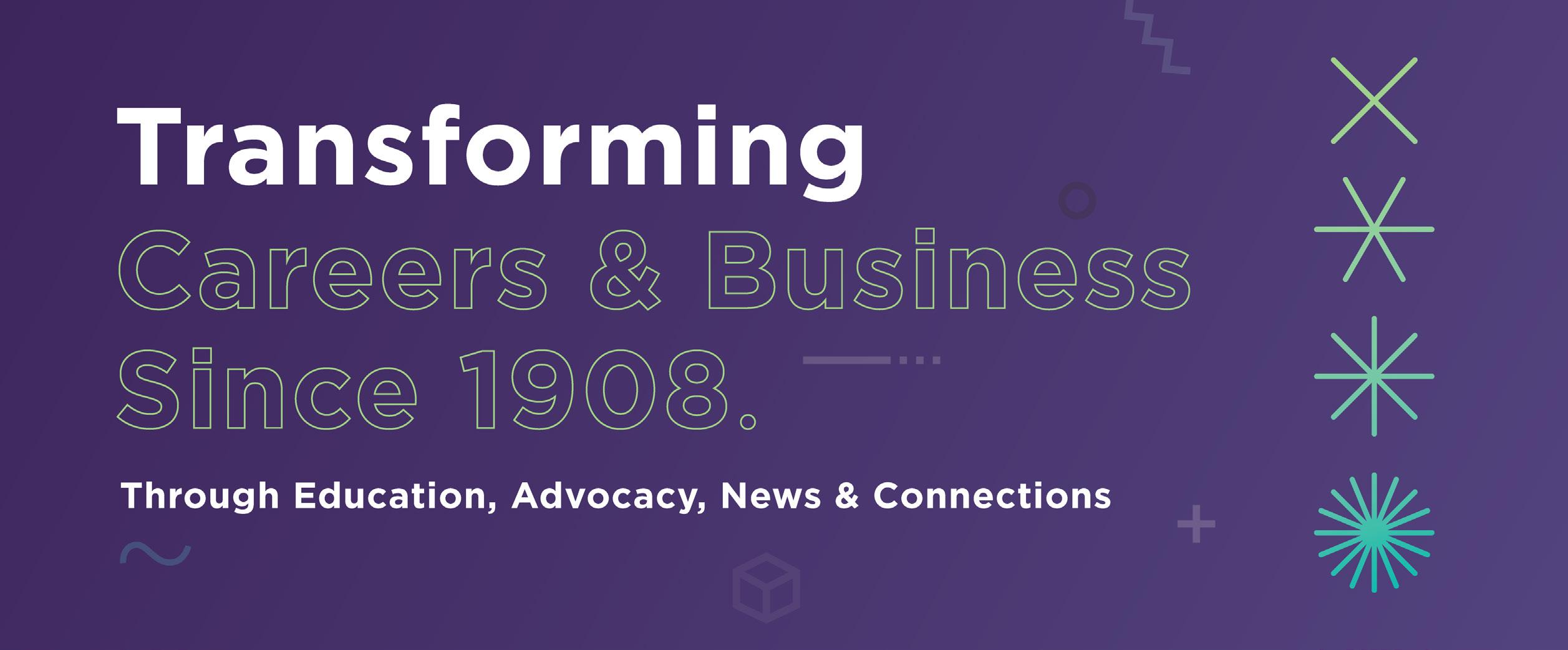
to taxpayers through OSCPA-backed income tax bracket reductions and rate cuts.
attended and connected through Town Halls and Advance to stay current on hot topics in the profession.
in The Ohio CPA Foundation, which allowed us to create one of the largest student pipelines in the nation!
were delivered twice a week through Takeaways and LegUp to keep you in the loop on the ever-changing business and tax environment.
No matter where you are in your career or role in your organization, OSCPA has what you, your team (and maybe even your boss) need to excel. Renew today by calling 614.764.2727 or going to
of complimentary learning/CPE. Your Member Curriculum is included with your membership to keep you current on the topics that matter most.